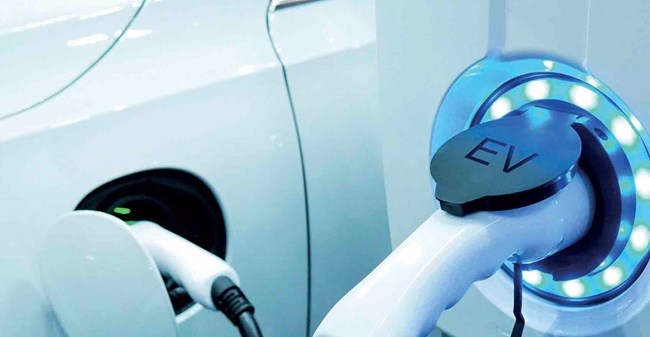
The start point for the best source of fleet information |
ADVERTISEMENT FEATURE: Plugging in to the future fleet
Date: 03 March 2021

It would be fair and accurate to say that 2020 was fraught with challenges, and no industry or sector was left untouched by the profound effects of the pandemic.
Despite a significant drop in car registrations in the past year, the popularity of EVs has continued to grow, with overall sales doubling over the past 12 months.
Pure-electric sales were up by 185.9% on 2019, and December saw the highest number of battery electric vehicles (BEVs) ever registered in a single month - 21,914.
The driving force behind this change in direction is the increasingly green-focused fleet sector, with company car registrations accounting for a 68% majority of the total annual sales of BEVs and PHEV (plug-in hybrid electric vehicles) last year.
So, what is steering fleet operators towards the creation of greener, cleaner fleets? And why now?
A perfect storm
Turbulent times and impending legislative change have forced operators to reinvigorate their strategies and focus more heavily on future-proofing their fleets.
What the past year has taught us is that change can be sweeping, unpredictable and fast-paced, so complacency and rigidity is no longer an option. Disruption is happening and fleet operators need to be ready.
As well as adopting a survive and thrive approach, fleet operators are feeling the tightening grip of the government, with those in the position of power continuing their fight against fossil fuel travel through penalisation and incentivisation.
Against a backdrop of the UK-wide ban on the sale of new petrol and diesel cars and vans and Clean Air Zone roll-outs, company car tax incentives are being ramped up and charging infrastructure is receiving significant investment.
It is clear to see that the carrot-and-stick approach is being favoured.
The economic climate we now find ourselves in could further accelerate change. For example, Chancellor Rishi Sunak is said to be considering increasing fuel duty for the first time in almost a decade to help bring the country's finances back under control.
Whilst all of this plays into the widespread adoption of EVs amongst fleets, improvements in battery range and vehicle choice from manufacturers are also instrumental in making the business case increasingly compelling.
A spotlight on data
Data insights will play a pivotal role in both the transition to and management of electric fleets.
As a first step, fleet decision- makers can use telematics data to gain complete transparency of their fleets and determine EV suitability, on an individual and company- wide basis.
Key insights into fuel consumption, driving behaviour, past trips, and mileage, come together to help identify early opportunities for the adoption of EVs.
Cost efficiency is always a top consideration and will become even more of a priority in a post-Covid environment.
Telematics technology can help businesses to shape the most cost-effective future EV strategies by accurately comparing EV running costs with ICE vehicles.
For fleets that have made the move to EVs, telematics can be used to reduce range anxiety and ensure proper maintenance by constantly monitoring battery level and remaining driving range.
Geo-fencing alerts can also be set up to identify vehicles entering Ultra-Low Emission Zones, helping highlight where an EV could otherwise be used more cost-effectively.
The electric powertrain shows no signing of slowing and fleet operators must get onboard or risk being left behind. Armed with the right tools and information, fleets will be able to pave the way to a sustainable, e-mobility future.










